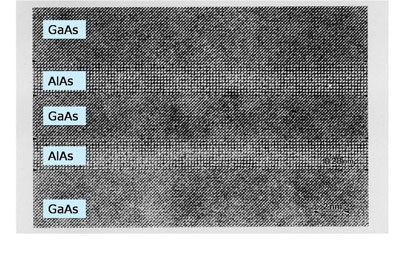Water molecules are continuously forming short-lived networks called clusters. These can in turn bind positively charged protons, and such clusters can provide active functional groups in proteins. Using infrared spectroscopy, it is possible to determine the bond strengths, geometrical structures and chemical properties of protonated water clusters. In order to measure the spectrum of molecular vibrations in clusters it is, however, necessary to use other molecules as messengers.
Aug 24th, 2010
Read more
 The Pittcon Program Committee is pleased to announce that Dr.Chad A. Mirkin, Professor of Chemistry, Northwestern University, Evanston, Illinois, will deliver the Pittcon 2011 Plenary Lecture, 'Polyvalent DNA Architectures: New Modalities For Intracellular Gene Regulation and Detection' on Sunday, March 13, 2011, at 4:30 p.m., in the Sidney Marcus Auditorium, Georgia World Congress Center, Atlanta, Georgia.
The Pittcon Program Committee is pleased to announce that Dr.Chad A. Mirkin, Professor of Chemistry, Northwestern University, Evanston, Illinois, will deliver the Pittcon 2011 Plenary Lecture, 'Polyvalent DNA Architectures: New Modalities For Intracellular Gene Regulation and Detection' on Sunday, March 13, 2011, at 4:30 p.m., in the Sidney Marcus Auditorium, Georgia World Congress Center, Atlanta, Georgia.
Aug 24th, 2010
Read more
Membranes protect every single cell of our body. Researchers have now discovered that exposure to standing surface acoustic waves influences the distribution of the membrane's lipids.
Aug 24th, 2010
Read more
A rheological technique, used by researchers at National Nanotechnology Center (NANOTEC) in Thailand has revealed the instability of y-oryzanol-loaded solid lipid nanoparticles er 60 days storage at three different temperatures of 4, 25, and 40C.
Aug 24th, 2010
Read more
A team of scientists at Rutgers University has found a material in which an electric field can control the overall magnetic properties of the material. If the magnetoelectric effect discovered by the Rutgers group can be extended to higher temperatures, it could be useful for manipulating small-scale magnetic bits in ultra high-density data storage.
Aug 23rd, 2010
Read more
New Jersey Institute of Technology (NJIT) researchers were awarded 15 new U.S. patents this past year, increasing the total number of issued patents for NJIT to 97. More than 150 applications are in process.
Aug 23rd, 2010
Read more
 Nanoscale simulations and theoretical research performed at the Department of Energy's Oak Ridge National Laboratory are bringing scientists closer to realizing graphene's potential in electronic applications.
Nanoscale simulations and theoretical research performed at the Department of Energy's Oak Ridge National Laboratory are bringing scientists closer to realizing graphene's potential in electronic applications.
Aug 23rd, 2010
Read more
The generation of an electric field by the compression and expansion of solid materials is known as the piezoelectric effect, and it has a wide range of applications ranging from everyday items such as watches, motion sensors and precise positioning systems. Researchers have now discovered how to control this effect in nanoscale semiconductors called quantum dots, enabling the development of incredibly tiny new products.
Aug 23rd, 2010
Read more
 In einem interdisziplinaeren Projekt ist es Wissenschaftlern des KIT gelungen, eine neue Erscheinungsform von optischen Resonatoren zu schaffen: Mikrokelche. Diese Polymerstrukturen sind durch ihre Form und ihre glatte Oberflaeche besonders effiziente Quellen fuer Laserlicht. Zudem haben sie das Potenzial kleinste Bio-Molekuele, Viren oder Gefahrstoffe nachzuweisen.
In einem interdisziplinaeren Projekt ist es Wissenschaftlern des KIT gelungen, eine neue Erscheinungsform von optischen Resonatoren zu schaffen: Mikrokelche. Diese Polymerstrukturen sind durch ihre Form und ihre glatte Oberflaeche besonders effiziente Quellen fuer Laserlicht. Zudem haben sie das Potenzial kleinste Bio-Molekuele, Viren oder Gefahrstoffe nachzuweisen.
Aug 23rd, 2010
Read more
The goal of this contest is to develop nanotechnology prototyping capability for practical applications with universal appeal.
Aug 23rd, 2010
Read more
It's the first day of school at the Joint School of Nanoscience and Nanoengineering in Greensboro. That's not just for the new school year; it's the first day of school ever for one of the UNC system's most innovative educational initiatives.
Aug 23rd, 2010
Read more
The DNA genomes of organisms whose cells possess nuclei are packaged in a highly characteristic fashion. Most of the DNA is tightly wrapped around protein particles called nucleosomes, which are connected to each other by flexible DNA segments, like pearls on a necklace. This arrangement plays a major role in deciding which genes are actively expressed, and thus which proteins can be synthesized in a given cell. Researchers have recently developed a model which explains the distribution of nucleosomes around the functionally crucial transcription start sites.
Aug 23rd, 2010
Read more
Thanks to a single-molecule imaging technique developed by a University of Illinois professor, researchers have revealed the mechanisms of an important DNA-regulating enzyme.
Aug 20th, 2010
Read more
Maryland Gov. Martin O'Malley has appointed Peter Searson and Steve Desiderio, two researchers from The Johns Hopkins University, to serve on a special task force to study the benefits of nanobiotechnology.
Aug 20th, 2010
Read more
A new approach to building an 'artificial nose' - using fluorescent compounds and DNA - could accelerate the use of sniffing sensors into the realm of mass production and widespread use, say Stanford chemists.
Aug 20th, 2010
Read more
 Experten der Molekularstrahlexpitaxie sind die Legobauer unter den Halbleiterphysikern. Sie koennen Atomschichten so gleichmaessig zusammenbauen, als waeren es die beruehmten Plastikbausteine.
Experten der Molekularstrahlexpitaxie sind die Legobauer unter den Halbleiterphysikern. Sie koennen Atomschichten so gleichmaessig zusammenbauen, als waeren es die beruehmten Plastikbausteine.
Aug 20th, 2010
Read more





 Subscribe to our Nanotechnology News feed
Subscribe to our Nanotechnology News feed